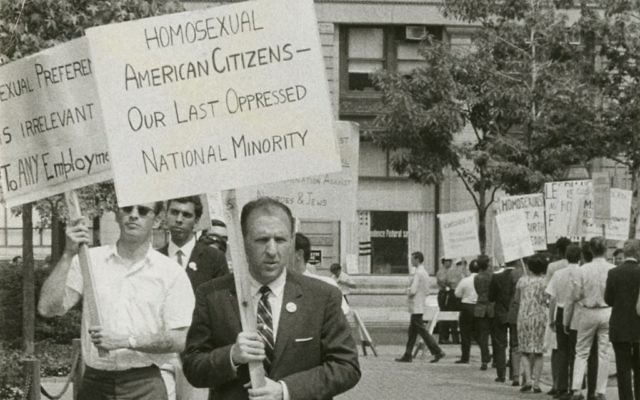‘Lavender Scare’ Reveals Ugly History
Documentary portrays gay people's persecution during 50's and one man's mission to help end it.

“The Lavender Scare” exposes a troubling period when the U.S. government persecuted gay people with the same fervor unleashed against Communists at the same time.
The documentary, which the Atlanta Jewish Film Festival screened before a packed theater in partnership with Out on Film on Sept. 14 as part of the AJFF Selects series, is based on David E. Johnson’s book “The Lavender Scare: The Cold War Persecution of Gays and Lesbians in the Federal Government.”
Instead of trailers, the Midtown Art Cinema audience was greeted by a still image of a young Jewish man, Frank Kameny, holding a sign: “The Last Persecuted Minority.”
The movie opens in the 1920s. Filmmaker Josh Howard shows that Washington, D.C., had a culture that welcomed the lesbian and gay community. People flocked there for jobs and love and danced openly until President Dwight Eisenhower in the 1950s declared that gay men and lesbians were sharing information with the Soviet Union.
Thus began the Lavender Scare.
The audience was fully absorbed in the film and talked back to the screen as the emotional scenes produced passionate reactions.
Many people murmured about Frank Kameny, the Jewish figure often seen as leading the fight against the Lavender Scare, and asked each other, “Did you know about him?”
Labeled the “Grandfather of Gay Activism” in the film, this seemingly little-known man, who met with President Barack Obama, connected with the AJFF audience.
The film touches on an underpublicized part of the midcentury American history, a period better known for the Red Scare. The Atlanta Jewish Film Festival chose a documentary that not only speaks to history, but also, with a single sentence at the end of the film, unites the entirety of the Lavender Scare with modern times.
“The Lavender Scare” discusses a troubling time in America that many still refuse to talk about and contributes to the film festival’s mission to enhance cultural understanding.



comments